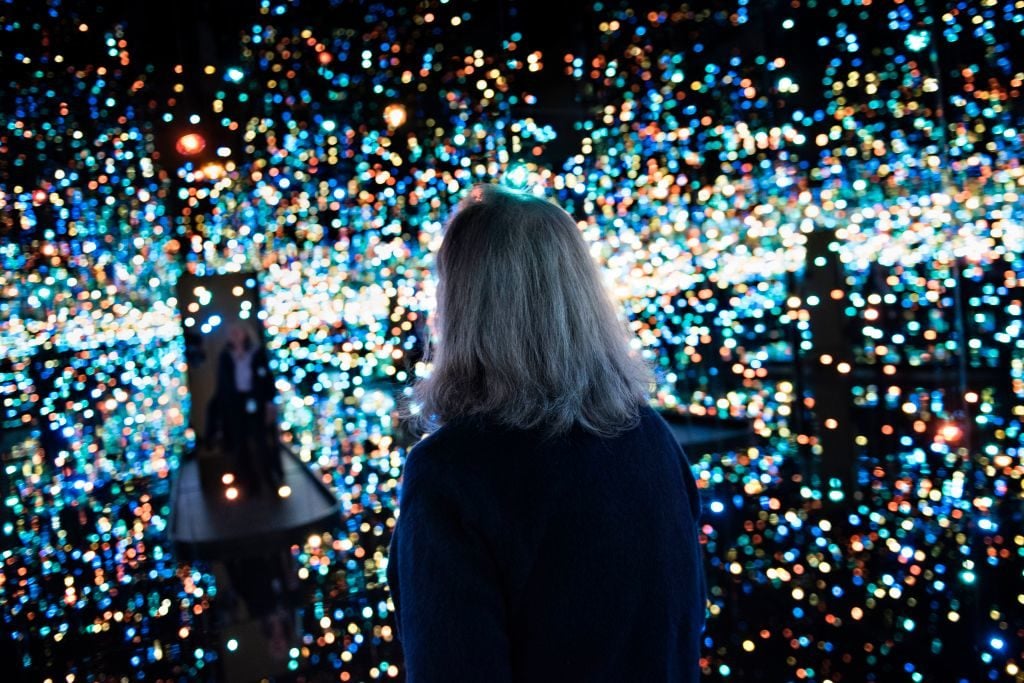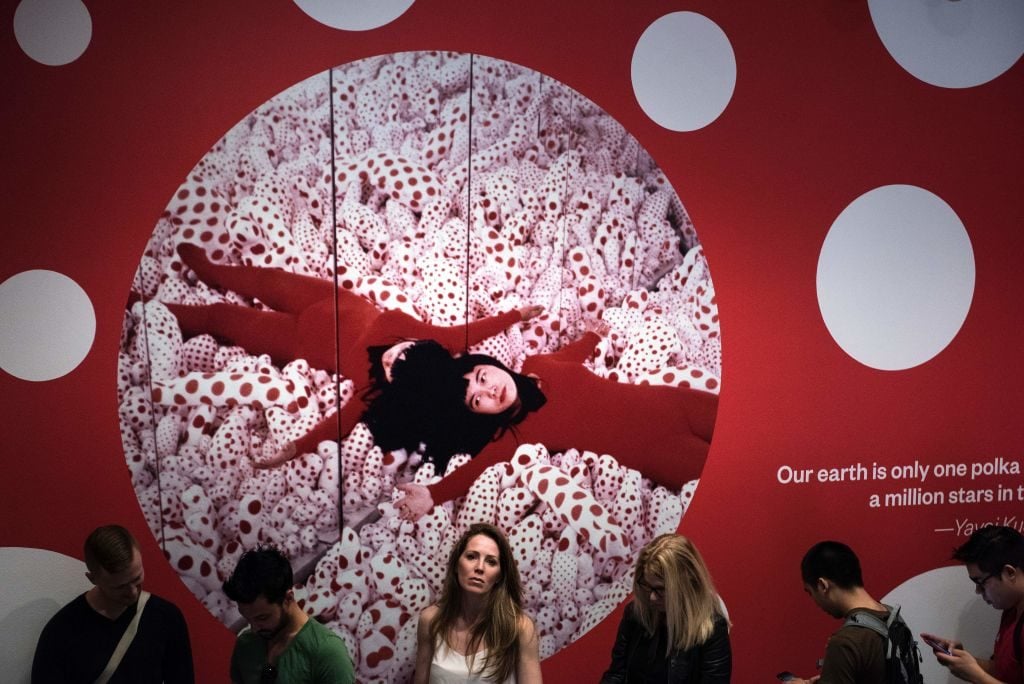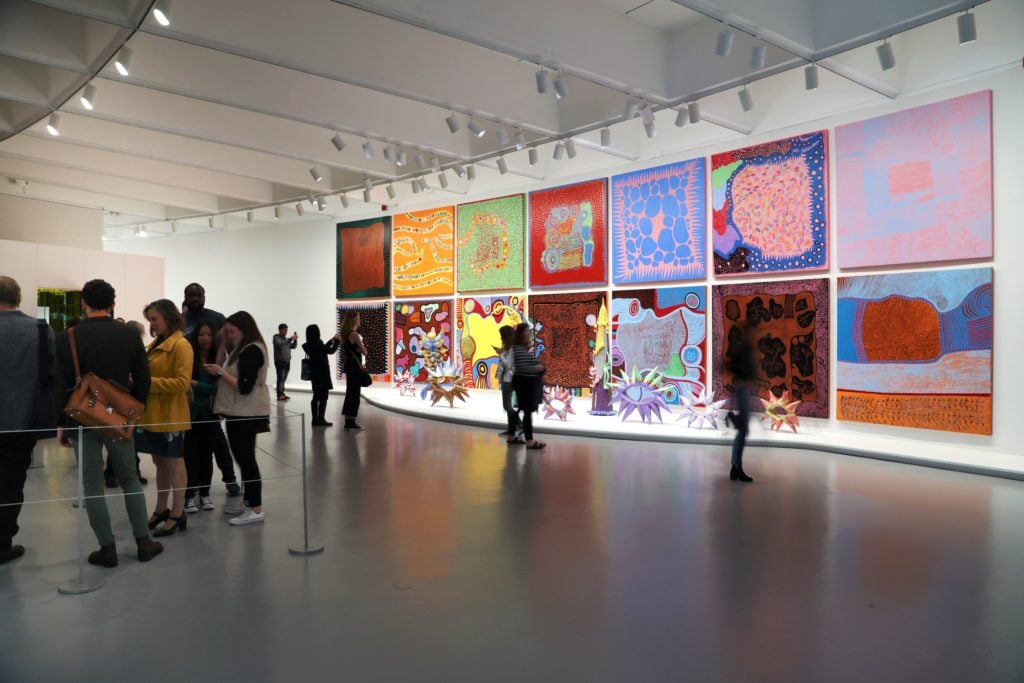Art & Exhibitions
Anatomy of a Blockbuster: How the Hirshhorn Museum Hit the Jackpot With Its Yayoi Kusama Show
The institution broke attendance records and increased its membership by a staggering 6,566 percent. (Thanks, Kusama.)

The institution broke attendance records and increased its membership by a staggering 6,566 percent. (Thanks, Kusama.)

by
Julia Halperin

Never doubt the power of Yayoi Kusama. The Japanese artist’s exhibition at the Hirshhorn Museum and Sculpture Garden in Washington, DC, “Yayoi Kusama: Infinity Mirrors,” which closed on May 14, helped the museum smash attendance records—and fill its coffers in the process.
During the three-month run of the show, the museum welcomed 475,000 visitors—the highest spring visitation in its history, and double the average attendance for that period. The exhibition itself, which had a strict cap on daily visitors, drew 160,000 people. (It was also Instagrammed 34,000 times, according to the museum, including by Ivanka Trump.)
But the Kusama windfall extends far beyond visitor figures. During the exhibition, the museum also increased its membership by a staggering 6,566 percent. (Yes, really—we double-checked our math.) Before the show opened in February, the Hirshhorn had a “small but dedicated” core group of around 150 members, according to a representative. By the time the show closed this weekend, that number had ballooned to 10,000.
The museum’s director, Melissa Chiu, says that the money generated by the new members—who paid a fee between $50 to $25,000 to join, depending on the tier of membership—will be put toward research and development for ambitious international loan exhibitions “that maybe otherwise would have taken longer because we would have had to fundraise for it especially,” she tells artnet News. “It enables us to be more adventurous.”

A visitor enters The Souls of Millions of Light Years Away during a preview of Yayoi Kusama’s “Infinity Mirrors” exhibition. (Photo: Brendan Smialowski/AFP/Getty Images.)
Unlike some funds raised by the museum, money made from memberships “is unrestricted—that means we can dedicate it towards whatever we consider worthy,” Chiu says. (The museum declined to disclose exactly how much money was raised from the program, but the Washington Business Journal reported in February that memberships generated $237,000 in the first two months of 2017.)
Chiu says: “I can’t tell you how transformative the Kusama show has been for this museum…, both by building our reputation as a national voice for contemporary art, and the infrastructure piece—it allowed us to build up things we hadn’t needed to before, but always wanted to do.”
New Friends
In the past, “we hadn’t really had an active membership program,” Chiu says. There also wasn’t much demand for one. While many museums offer free entry as part of their membership benefits, the Hirshhorn—part of the Smithsonian Institution—is always free to enter.
But with the Kusama show—which brought together six of Kusama’s mirrored rooms and her multi-colored Obliteration Room (2002)—the museum spotted an opportunity. In order to protect the art and preserve an intimate viewing experience in the closet-sized spaces, visitors were required to secure free timed passes. But these tickets would frequently sell out online in a matter of minutes.

Lines to enter the “Yayoi Kusama: Infinity Mirrors” at the Hirshhorn. (Photo: Brendan Smialowski/AFP/Getty Images.)
To give Kusama superfans another opportunity to get their selfie on, the Hirshhorn introduced a new low-level membership program: the “Limited Edition Kusama Circle.” For $50, a member and a guest could skip the general admission line to enter the show. Within two weeks, several thousand people joined at that level before the museum became overrun with requests and had to suspend the offer.
All told, around 6 percent of visitors to the museum during the show were members or became members, according to Chiu. (Some may remember this technique from the Metropolitan Museum of Art’s blockbuster “Alexander McQueen: Savage Beauty” show, which offered the same skip-the-line perk and induced nearly 25,000 new members to join during the show’s run.)
But membership isn’t the only way Kusama has transformed the Hirshhorn. The show also changed the way the it deals with visitors. Before the show, the museum had no visitor services staff. In preparation for its first certified blockbuster—which was also one of its most expensive shows to date—the Hirshhorn brought in 120 new guides and volunteers to manage the crowds.

Visitors to “Yayoi Kusama: Infinity Mirrors” at the Hirshhorn Museum and Sculpture Garden. Photo by Cathy Carver, courtesy of the Hirshhorn.
“That was a sizable new program that we rolled out and we learned a lot about how to communicate to visitors, how to create a welcoming environment, how to help people understand behavior in museums,” Chiu says. “For many of these visitors, it was their first time in our museum.” (There was a learning curve: early on, the museum had to temporarily close one of the rooms after a selfie-taker smashed into one of Kusama’s yellow pumpkins.)
Chiu plans to send along advice to the next five museums lined up to host “Yayoi Kusama: Infinity Mirrors” in the United States and Canada through 2019. (Next stop: Seattle.) But at home, the Hirshhorn will be shifting its focus to figure out how to retain its expanded audience and keep its new members engaged after their yearlong term expires. Chiu is optimistic she’ll be able to keep the masses coming back. “The first time is the hardest,” she says.